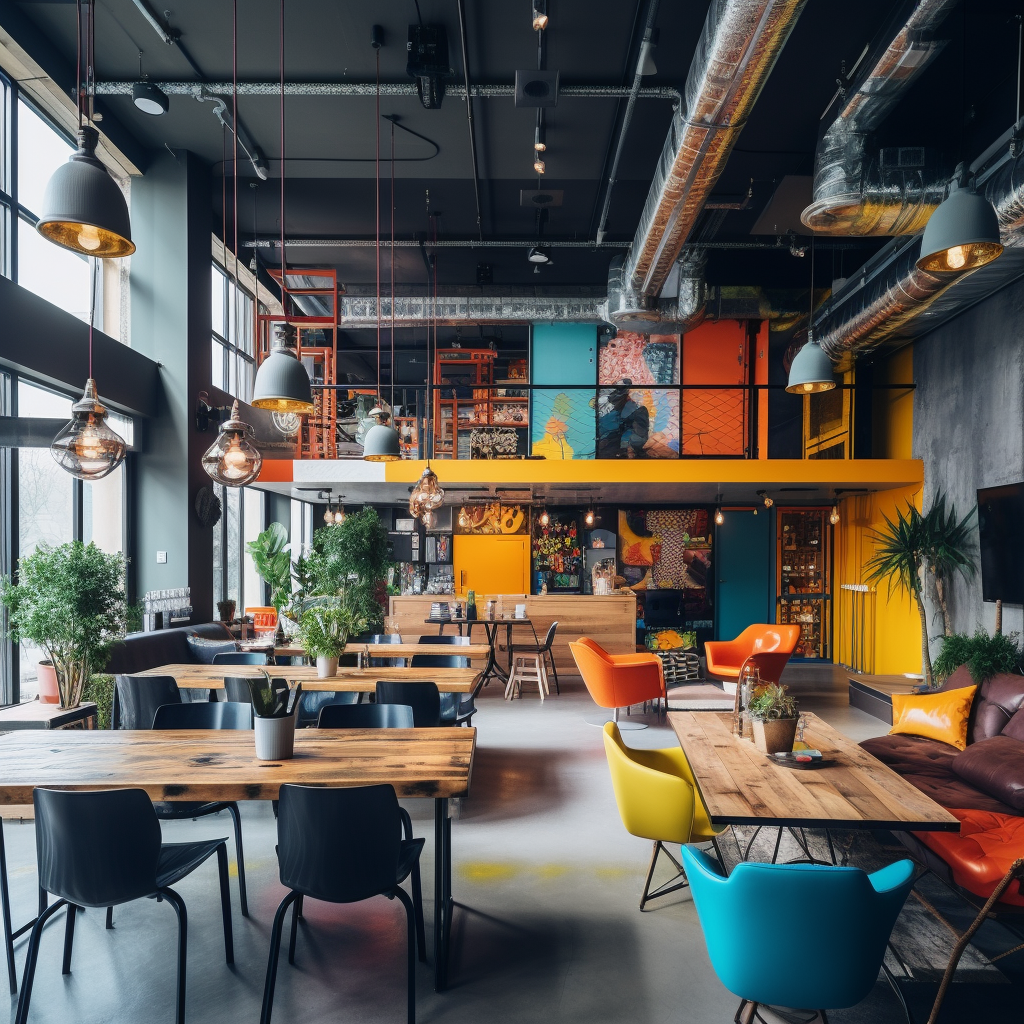Elevating Spaces: Exploring the Top 5 Areas of Commercial Interior Design
5 Key Elements of a Restaurant Design Concept
Commercial interior design is a captivating fusion of creativity and functionality that transforms spaces into enchanting sanctuaries. In this article, we will explore the top five areas that lie at the core of this enigmatic craft. From spatial alchemy to conceptual storytelling, sustainable enchantment, emotional resonance, and adaptable universes, each aspect contributes to the magic of commercial interior design.
In the realm of design, commercial interior design stands tall as a true art form that harmoniously blends creativity with functionality. It is the secret sauce that turns ordinary spaces into awe-inspiring sanctuaries, leaving an indelible mark on visitors and occupants alike. In this comprehensive article, we will embark on a captivating journey through the top five areas that define the enchanting world of commercial interior design. From spatial alchemy to storytelling, sustainability, emotional resonance, and adaptability, each aspect contributes to the brilliance of commercial interior design.
Spatial Alchemy: The Magic of Transformative Design
At the heart of commercial interior design lies the art of spatial alchemy, where designers skillfully manipulate space to create enchanting atmospheres. Whether it's a small boutique or a grand hotel lobby, the spatial layout plays a pivotal role in shaping experiences. Designers use clever techniques like strategic placement of furniture, the innovative use of mirrors, and artful lighting to create the illusion of more extensive spaces or to enhance intimacy in larger areas. This transformative power not only maximizes functionality but also elevates aesthetics, leaving visitors in awe of the seamless integration of form and function.
Conceptual Storytelling: Unfolding Narratives Through Design
Step into a thoughtfully designed commercial space, and you'll find yourself stepping into a story. Conceptual storytelling is the art of infusing brand identity, history, and purpose into the very fabric of interior design. Each element – from materials, colors, and textures to architectural motifs and artwork – speaks volumes about the brand's ethos, guiding visitors through an immersive journey. Whether it's a restaurant that transports diners to a bygone era or a retail store that unfolds the brand's adventurous spirit, conceptual storytelling enriches the experience, leaving a lasting emotional impact.
Sustainable Enchantment: Balancing Glamour with Green
In the era of environmental consciousness, sustainable enchantment has emerged as a driving force in commercial interior design. Designers have embraced the challenge of integrating eco-friendly practices and materials without compromising on style or comfort. From utilizing recycled and renewable materials to incorporating energy-efficient lighting and smart technology, commercial spaces have become eco-conscious sanctuaries that inspire both visitors and businesses to make a positive impact on the planet. Sustainable enchantment not only appeases the conscience but also elevates the aesthetic appeal of the space, creating a win-win for both nature and design.
Emotional Resonance: Stirring Hearts with Design
The emotional resonance of commercial spaces goes beyond mere aesthetics. It is the art of designing with empathy and intention, evoking feelings and forging connections with users. Designers skillfully craft spaces that inspire joy, relaxation, or productivity, depending on the purpose of the environment. The careful selection of colors, textures, and lighting can create a calming ambiance in a spa or invigorate creativity in a co-working space. Emotional resonance transforms commercial interiors into welcoming havens that resonate with the hearts of visitors, forging a lasting bond with the space and its purpose.
Adaptable Universes: The Ever-Evolving Spaces
In the dynamic world of commerce, adaptability is key. Commercial interior designers have mastered the art of creating adaptable universes – spaces that effortlessly evolve to meet changing needs. By incorporating modular furniture, flexible layouts, and versatile design elements, designers empower clients to transform their spaces as requirements evolve. Offices can quickly reconfigure for collaborative sessions, retail stores can host events, and pop-up shops can materialize overnight. Adaptable universes not only enhance efficiency but also reflect the ever-changing nature of businesses in a fast-paced world.
Commercial interior design is a realm where artistry and practicality unite to create mesmerizing spaces. This article delves into the five key areas of spatial alchemy, conceptual storytelling, sustainable enchantment, emotional resonance, and adaptable universes that define the essence of commercial interior design. Each aspect adds a unique touch to the enchanting canvas of this craft.

